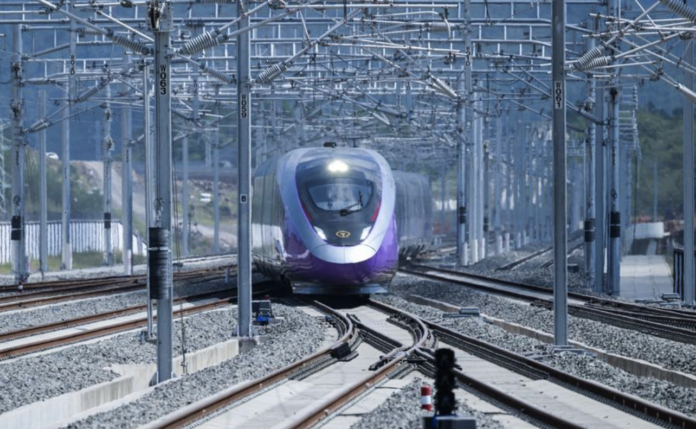BEIJING, Oct. 8 – As a Chinese saying goes, if you want to get rich, build roads first. Since the founding of the People’s Republic of China, the country has been committed to building a robust transport network, connecting remote villages with bustling metropolises and facilitating the smooth flows of people and goods.
In its latest efforts to boost regional connectivity, China put into operation two sections of railway in the Guangdong-Hong Kong-Macao Greater Bay Area in May, marking the opening of the longest intercity railway route in the area.
The 258-kilometer-long line, linking cities like Huizhou, Dongguan, Guangzhou, Foshan and Zhaoqing, underscores China’s dedication to enhancing transport across its vast expanse.
From underdeveloped infrastructures to a sprawling network, China’s transport sector has now evolved into a multi-faceted and integrated system over the past 75 years, featuring high domestic and international connectivity.
China’s railways set a new record in daily railway passenger trips, with over 21 million passenger trips handled on Tuesday, the first day of the weeklong National Day holiday, highlighting the country’s impressive capacity and reliability.
Roads remain the most popular mode of transportation in China, and the country’s road network has witnessed an outstanding growth. From a mere 80,700 kilometers in the early days when the country was founded, its total road length has now surged to over 5.4 million kilometers.
In particular, the length of roads in rural areas reached about 4.6 million kilometers by the end of 2023, accounting for 84.6 percent of the total. With more roads built, travel has no longer been a luxury for residents in isolated and remote areas, greatly boosting their mobility and bringing more job opportunities.
China now also has the world’s busiest operational railway network, stretching over 160,000 kilometers. This represents a phenomenal leap from the 21,000-kilometer-long railways back when the country was founded.
Rapid urbanization has turbocharged the expansion of the comprehensive transportation system in Chinese cities. With over 10,000 kilometers of operational urban railways and 259 certified civil aviation airports, Chinese cities have built robust transport capacities to cater to the growing needs of their urban population.
Logistics has been made more efficient with the fast growth of its multimodal transport, which has propelled China to become the world’s leading express delivery hub for the past 10 years, with per capita express delivery parcels in the country exceeding 90 pieces in 2023. – Xinhua
















